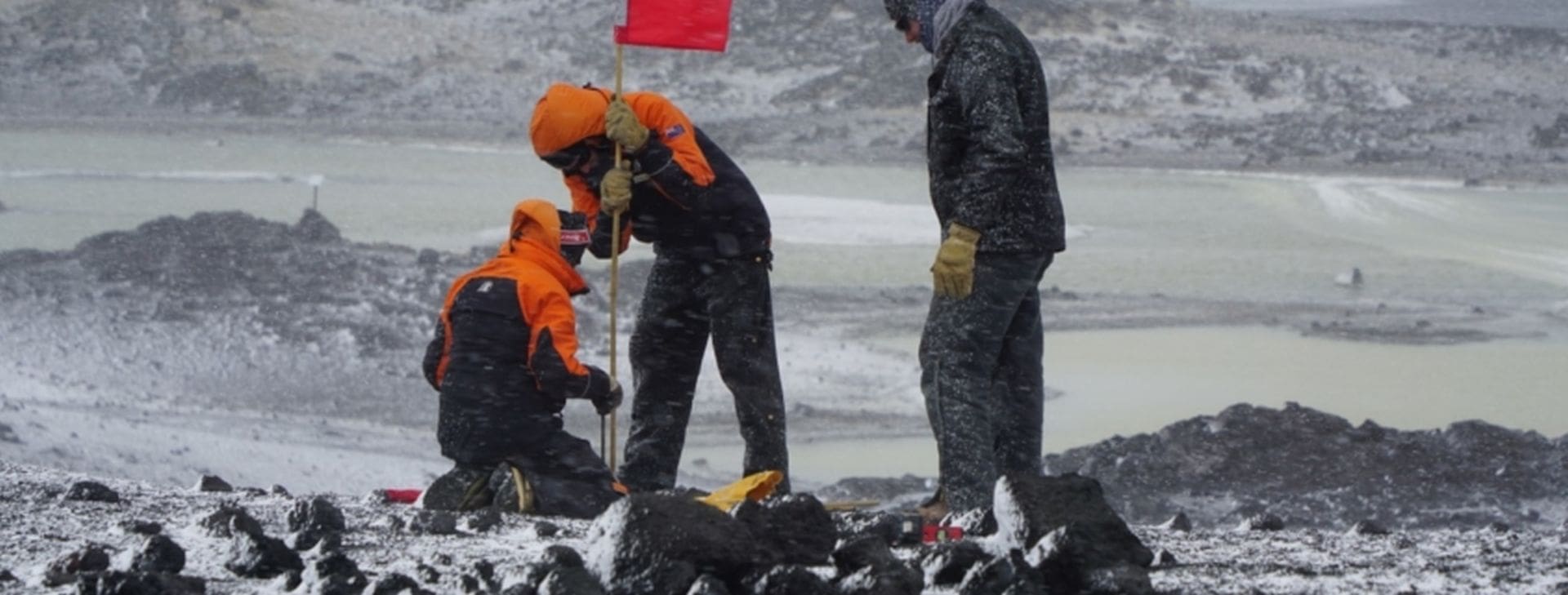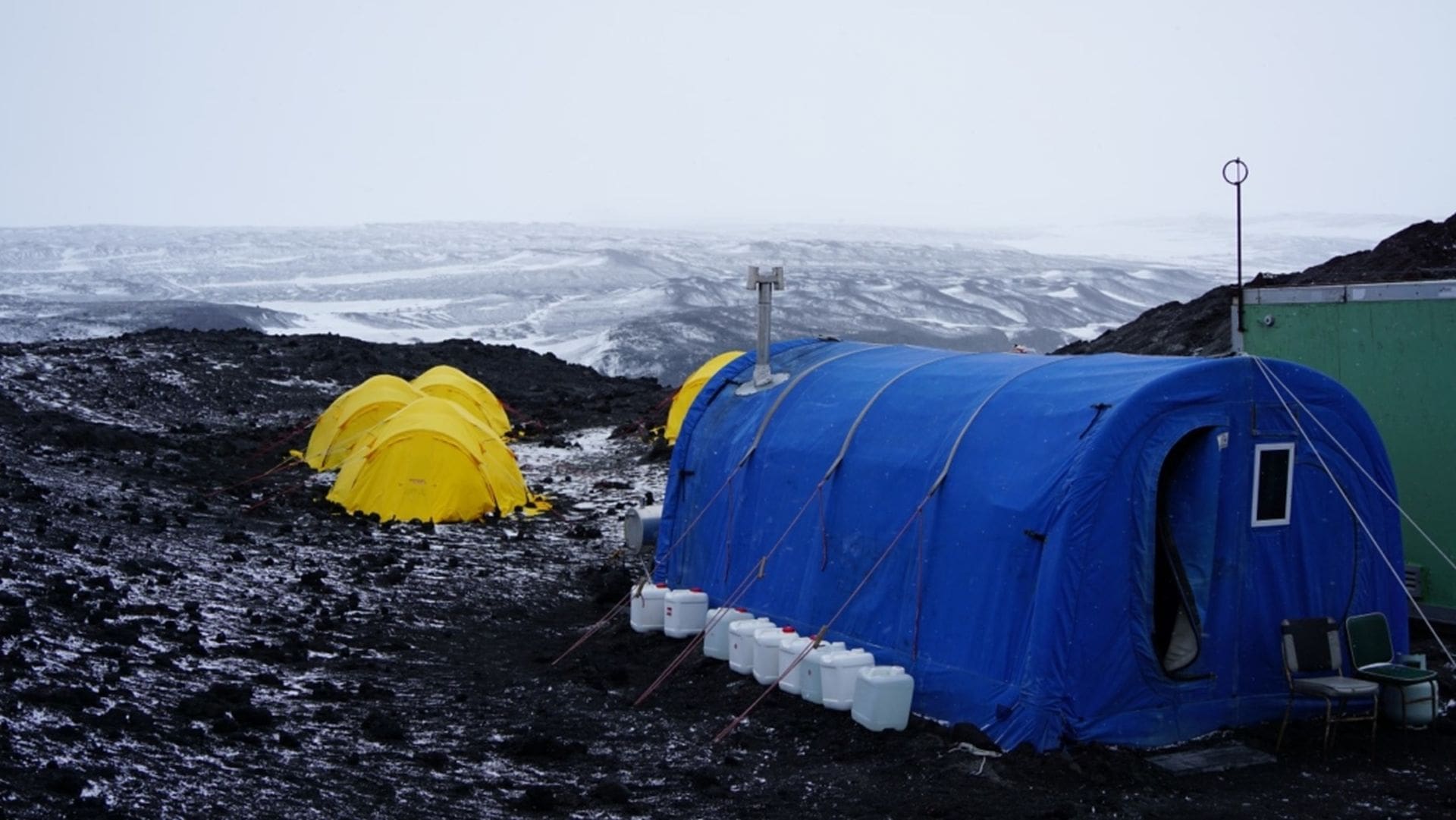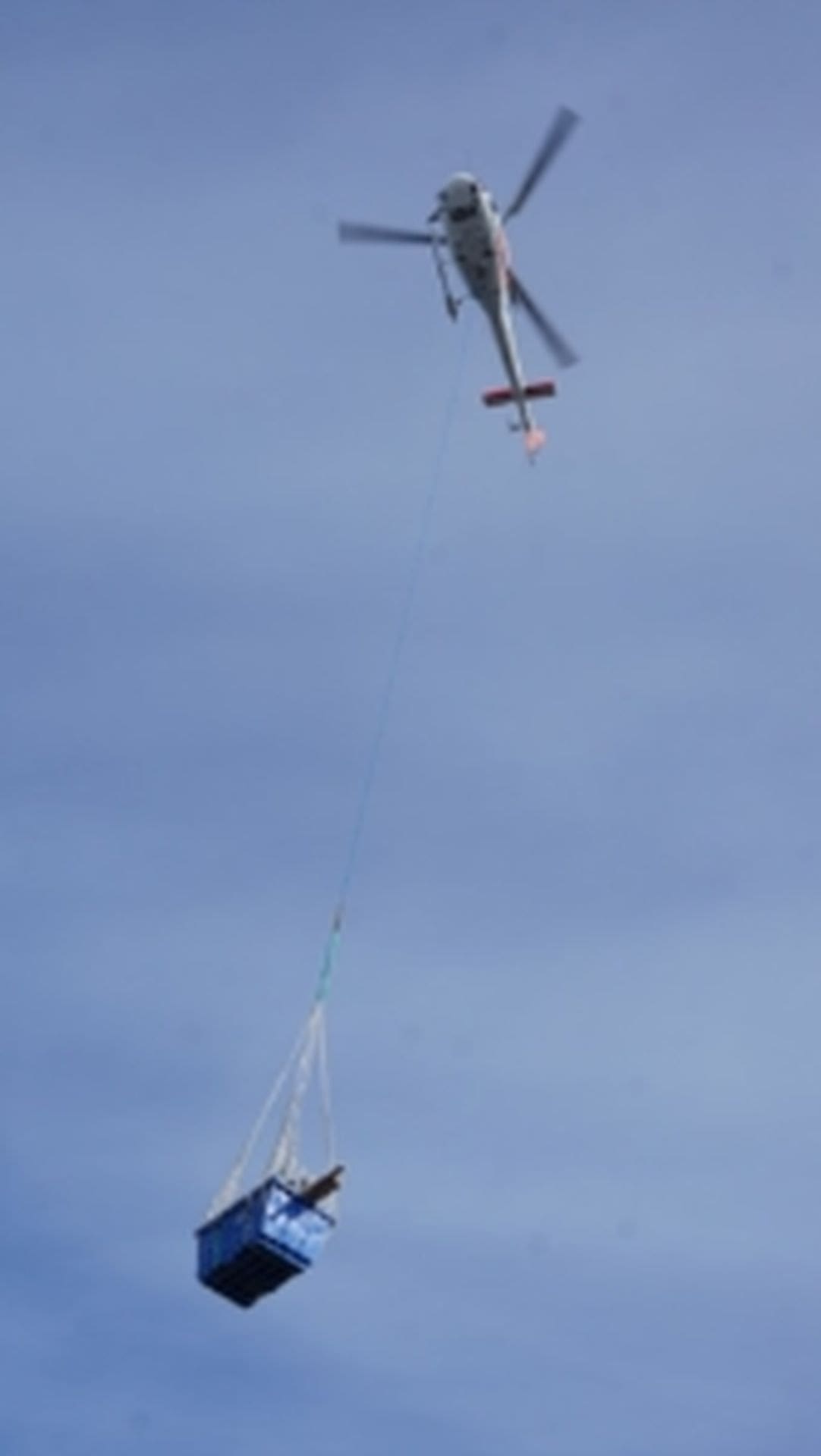Summer Fieldwork at Cape Royds
Antarctic Heritage Trust Lead Conservator Jane Hamill updates us on the on-Ice conservation team’s life and work at Cape Royds, site of Shackleton’s Nimrod hut.
Our team of five flew to Cape Royds by helicopter two weeks ago. The flight took us past the crevassed slopes of the volcano Mount Erebus and the blue ice of the Erebus glacier tongue. We even flew past an ice axe marking a food cache from one of Shackleton’s expeditions to Mount Erebus.
We have since settled into camp life, sharing camp duties such as cooking and snow melting. Feathered friends from the nearby Adelie penguin rookery occasionally come for a visit. The local skua regularly remind us of their presence, flying low past our tents or keeping a keen eye on our activities around the hut.
The weather has generally been quite settled, though we have had a few snowy and stormy days. The clear, sunny days can feel quite warm and are definitely the most pleasant for working.
We have started into our ambitious work program at Shackleton’s Nimrod Hut. Our work to manage historic food around the outside of the hut continues from last year. Much of the food is heavily degraded or mouldy and poses an environmental risk to the local wildlife and human visitors to the hut. Thankfully, the food being discarded is less fragrant than last year!
Our stay here ends around New Year’s when we depart for a further week at Cape Evans to carryout work at Scott’s Terra Nova hut.
Our living and sleeping tents. © AHT/Jane Hamill
Artefacts and equipment getting delivered by sling load. © AHT/Jane Hamill
Erecting flags as way markers in stormy weather. © AHT/Jane Hamill







